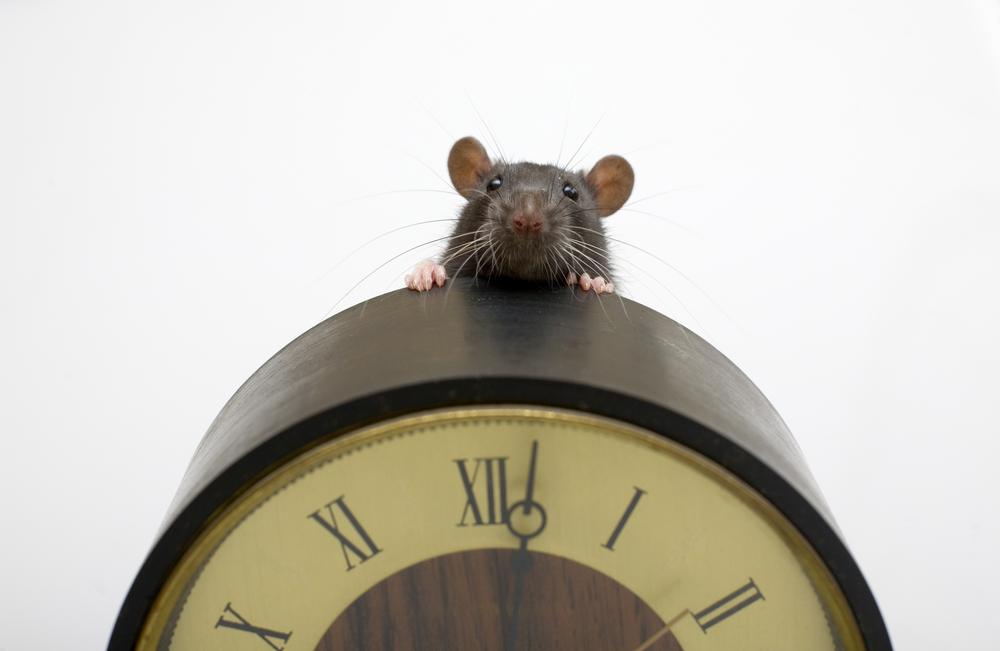Oxygen Shift May Be Key to Resetting Biological Clock

A small shift in the oxygen levels in the air could act as a "reset" button for the biological clock, according to a new study in mice.
Mice in the study that were exposed to a brief dip in the levels of oxygen in the air that they were breathing adjusted more quickly to a new circadian rhythm than mice that received steady levels of oxygen, the researchers found.
In other words, the dip in oxygen levels seemed to help the animals adjust to the mouse equivalent of jet lag, according to the study, which was published today (Oct. 20) in the journal Cell Metabolism.
The thought of changing oxygen levels may sound scary; however, the oxygen levels to which the mice were exposed in the study were not so low that they were harmful. The levels used in the experiment were similar to the oxygen levels common on airplanes, the researchers, led by Gad Asher, a senior scientist at the Weizmann Institute of Science in Rehovot, Israel, wrote in their study. [10 Things You Didn’t Know About the Brain]
The research was aimed at developing a better understanding of a body's circadian rhythm, or biological clock. The clock is found in the brain of all mammals, and it somehow communicates with nearly every cell throughout the body, but scientists have not known how this communication happens.
In mice, oxygen levels in the cells fluctuate throughout the day, according to the study. The researchers proposed that oxygen might be the missing signal.
In several experiments, they found that oxygen levels in the cells of mice appear to increase at night, when they are active, and decrease during they day, when they are at rest.
Get the world’s most fascinating discoveries delivered straight to your inbox.
Next, the researchers set out to determine if changing the levels of oxygen in the air the mice were breathing could also change the circadian rhythm.
In a lab experiment, the researchers changed oxygen levels in the air by 3 percent, and found that they were able to "reset" the circadian clocks of cells growing in lab dishes.
Then, in an experiment in mice, the researchers exposed the animals to either oxygen levels that remained stable at 21 percent (this is the percentage of oxygen in the air we breathe at sea level), or levels that started at 21 percent, dipped down to 16 percent for 12 hours, then rose back to 21 percent, according to the study.
At first, exposing the mice to fluctuating oxygen levels instead of steady levels had no effect on their circadian rhythms, they found.
But when the scientists also added in jet lag — by exposing the mice to "daylight" six hours ahead of schedule — the difference in oxygen levels played a role. When the jet-lagged mice were exposed to the dip in oxygen, they were able to adjust to a new eating, sleeping and activity schedule more quickly than the mice that didn’t experience any changes in oxygen levels, the researchers found.
Because the study was done in cells and animals, it's not clear if the results also apply to humans.
However, the researchers noted that oxygen levels on airplanes are lower than oxygen levels on the ground. Because some people report airsickness due to these lower levels, the aviation industry is apparently investigating an increase in oxygen levels on planes to 21 percent. Given the findings of the study, however, doing so could have a negative impact on jet lag, the researchers wrote.
In future experiments, the researchers would like to see if higher levels of oxygen could also shift an animal's circadian rhythm.
"I believe passengers [on airplanes] might be more enthusiastic to inhale oxygen-enriched air to alleviate jet lag in contrast to low oxygen" air, Asher said in a statement.
Originally published on Live Science.


